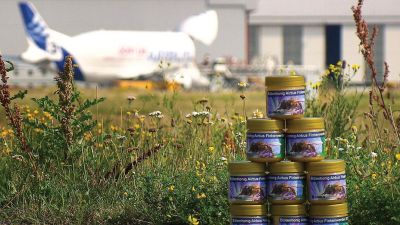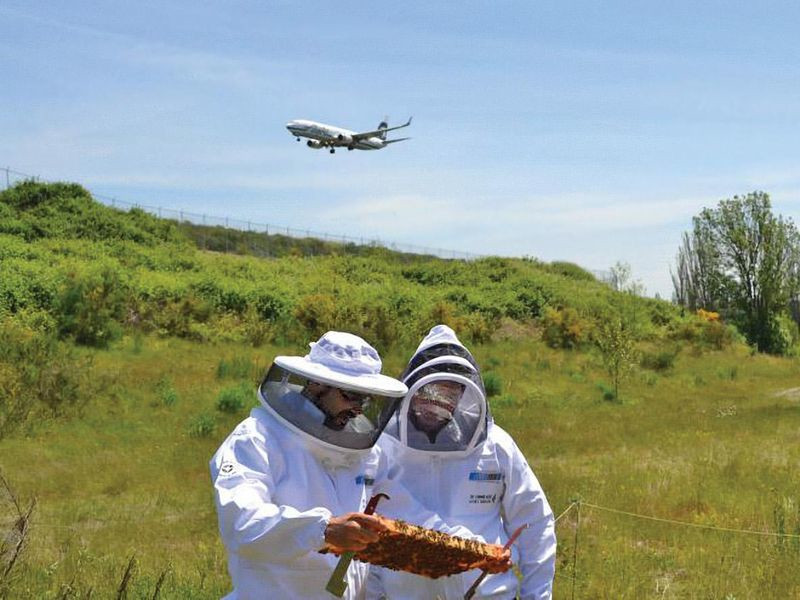In the summer of 2012, honeybees swarmed the Pittsburgh airport, probably because the conditions are favorable there. Like many airports, the tarmac is surrounded by wild, wide-open fields that exist to contain the cacophony. And a couple of nearby creeks are dotted with plenty of forage-worthy wildflowers.

Now, nearly a decade later, the airport is home to 110 colonies that house around 4 million honeybees. And they aren’t alone. Several other US airports are getting in on the apiary action, including O’Hare, Sea-Tac, and Minneapolis-St. Paul.
The relationship between honeybees and airports is a symbiotic one — the honey the bees produce is a litmus test for air pollution levels around the airport, which must fall within regulations. German airports have employed bees as ‘bio-detectives’ for over twenty years, and they give the honey away for free inside the terminal. It’s okay, though — analysis reveals that the hydrocarbon and heavy metal levels in the airport honey aren’t any higher than honey from non-industrial bees.
Given that honeybees pollinate around $15 billion in crops annually in the US alone, it’s a wonder that we aren’t doing everything possible to fight colony collapse disorder and other problems around the world. This mysterious issue has grown in the last few years, and 2020 saw highest death toll since 2016. Colony collapse disorder aside, plenty of problems persist for our fuzzy friends — pests, pesticides, pathogens, and poor nutrition.
What’s the deal with bees, anyway? How do they fly? Because they aren’t supposed to fly.
















*AirBeeNBee
That is all.
Hack a bee. Get a drone. :-)
That’s the Author signature.
Would all the bees help keep the area free of Canadian geese and other big birds? Captain Sully would agree.
Om nom, kerosene flavour is right up my alley! But I assume if they tested for heavy metals already they checked for hydrocarbons too.
Says that in the same sentence: “analysis reveals that the hydrocarbon and heavy metal levels in the airport honey aren’t any higher than honey from non-industrial bees.”
Before landing, aircraft pump their extra fuel overboard, which rains on the agricultural areas close to airports. If testing is done to compare kerosene contaminated honey from around the airport to kerosene contaminated honey from inside the airport, I’m sure everything will check out just fine, and that honey is safe to eat. I trust the science, do you?
That’s not the case for civilian aircraft since they avoid wasting fuel whenever possible. Might be the case for certain military aircraft, but even there I doubt it’s common to just dump fuel.
I wonder if the honey from airport AirBeeNBees would be contaminated with lead or other chemicals due to the combustion residue of airplane engines. There are many smaller airports in danger of being closed down due to the use of lead in general aviation gas.
Most aircraft burn jet fuel, which is closer to kerosene.
Where are comments Lebowski?
How much lead in the honey?